Migration from Ireland was central to the experiences of the powder mill workers on the Brandywine. Most Irish immigrants who worked at the company powder yards came from a specific region in Northern Ireland, chiefly Fermanagh, Tyrone, and Donegal counties. Multiple sources provide clues to their exact geographic origins, which shaped the culture they brought with them to Delaware and thus affected how they adapted here.
E.I. du Pont de Nemours & Company actively facilitated immigration in their search for reliable employees. By the 1820s, the company had an organized system whereby it maintained standing accounts with various transportation agents in Philadelphia who would arrange for passage whenever an employee wanted to bring a relative over to join them in Delaware. Black Powder, White Lace documented for the first time this program of assisted immigration and recreated the familial relationships that led individuals to bring their wives, children, parents, and siblings to Delaware in a process called chain migration. Though immigration historians have long known that Irish families relied on chain migration, the quantity and quality of relevant sources at Hagley enabled author Margaret Mulrooney to offer new insights into the practice.
PRIMARY SOURCES
Transportation agent Robert Taylor correspondence, 1830s to 1850s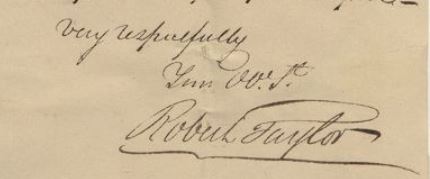
The nineteenth-century E.I. du Pont de Nemours & Co. records in Hagley's archives are remarkably complete. Among the records are correspondence between the company and transportation agents like Robert Taylor, who arranged passage for Irish laborers and their relatives to the United States. Correspondence like this provides rich details about the immigration procedure, along with the names of passengers and sponsors, dates of immigration, and fares.
Petit ledger listing emigrants from Ireland, 1854-1855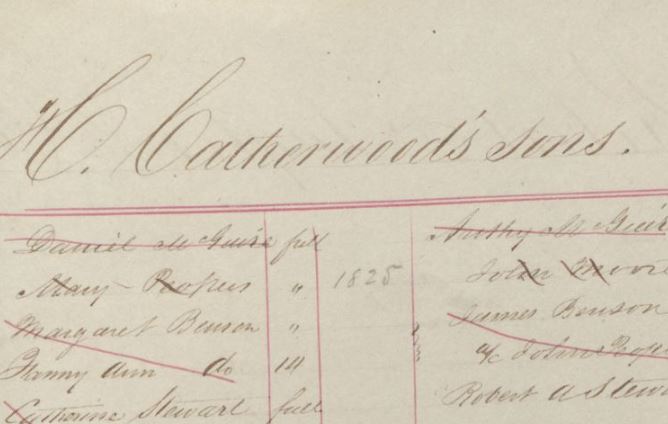
The inside cover of this 1854-1855 petit ledger contains a list of Irish emigrants brought to Delaware through agent H. Catherwood & Sons of Philadelphia. Using the alphabetical list of employees with wage accounts in this volume, one can choose a name, then go to the account page and see what each person did for a living, how much they earned, and myriad other details such as payments debited for rent, subscriptions to the Catholic Church or even cash paid for a cow! Ledgers can also be cross-referenced with other sources to reconstruct family relationships.
Elizabeth Beacom interview, 1967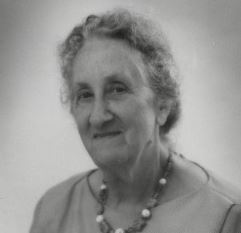
Born in 1891, Elizabeth "Bess" Beacom grew up in the Squirrel Run neighborhood of the powder mill community, and her father, Edward, worked in the saltpeter refinery. In her interview, she discussed her father's immigration to the United States and how he encouraged and supported several of his relatives to join him later. She told the interviewers, "I have my father's tin box. It's marked steerage, so I guess that's the way he came." Beacom generously gave this trunk to Hagley's museum collection, where it still resides.
Edward Beacom's steerage trunk, circa 1870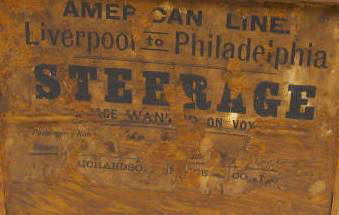
In 1870, Edward Beacom left County Fermanagh for the United States to work at the black powder mills, having been persuaded by his sister, Elizabeth Ward, who already lived in the powder mill community. Beacom traveled in steerage aboard a ship from Liverpool, England. All of his belongings were packed in this trunk.
James Toy, Sr., Faith Betty Lattomus, and Madaline Betty Walls interviews, 1960s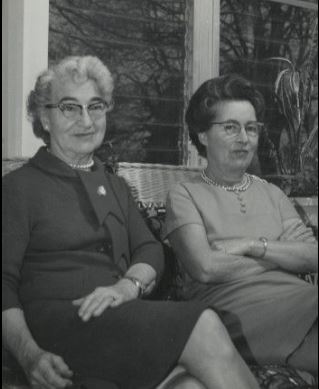
Many Irish families relied on oral tradition to preserve information about their place of origin in Northern Ireland. The powder yards closed in 1921, and decades later, Hagley staff captured interviews with some of the last generation of powder workers and their families, preserving part of the oral tradition of the Irish community on the Brandywine. Like that of Elizabeth Beacom above, these interviews help corroborate information found in church records, letters to emigration agents, and wage ledgers. Listen or read the transcript of James Toy Sr. describing his grandfather's arrival from County Tyron or sisters Faith Betty Lattomus and Madaline Betty Walls (pictured) discussing their maternal grandfather's origins in a place outside Londonderry (County Derry) and their paternal grandparents' Irish connections.
Additional Sources
Immigration section from The DuPont Company on the Brandywine digital exhibit

